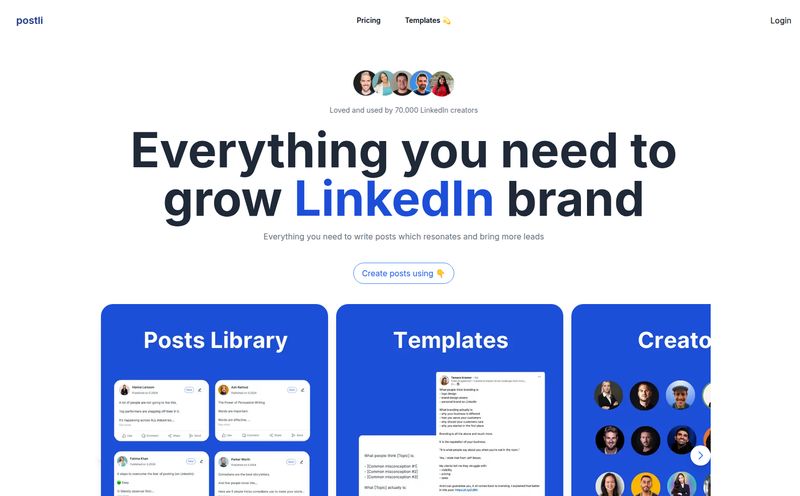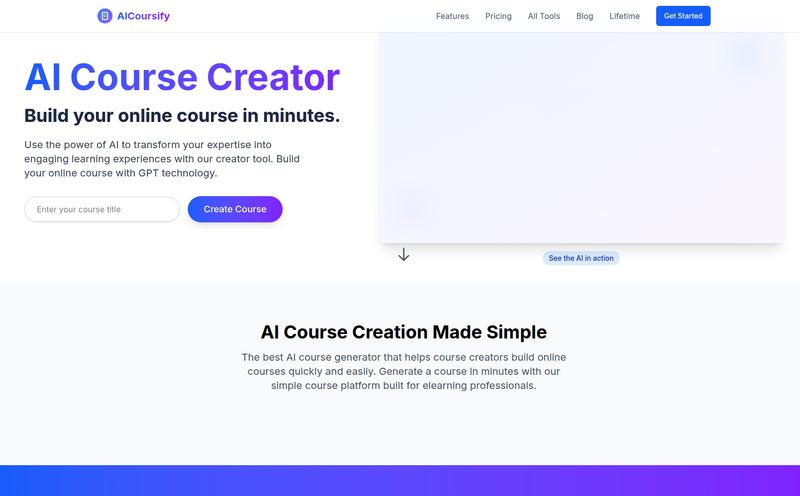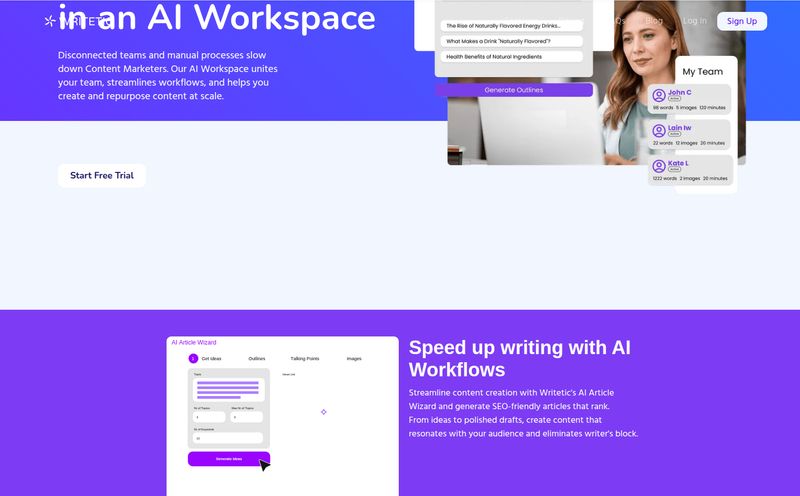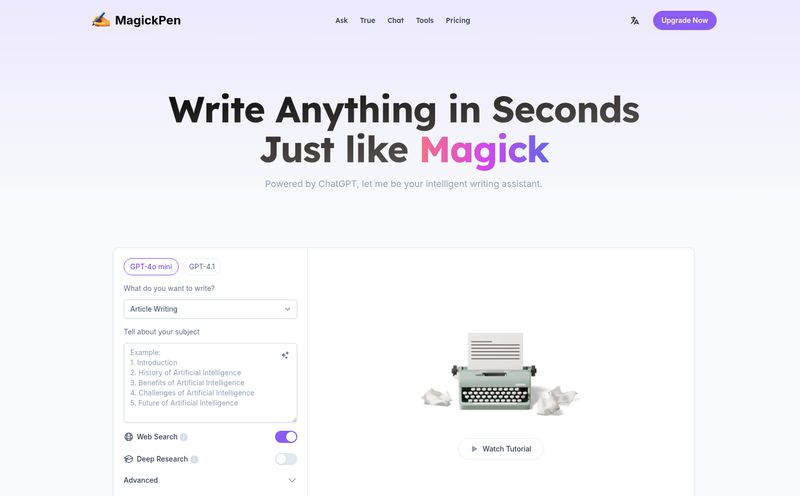As someone who’s been swimming in the SEO and content creation pool for years, I’ve seen AI writers come and go. We've all played with the big ones, the Jacks-of-all-trades that can pump out a blog post outline or a social media caption in seconds. But lately, I’ve been more fascinated by the specialists. The little niche tools designed to do one thing really well.
We're talking about AIs that don't just write marketing copy, but help you with the deeply personal stuff. The words that really matter. Think wedding vows, heartfelt poems, or even that dreaded resignation letter you’ve been putting off writing. It’s a cool concept, right? Using a bit of machine learning to untangle the mess of thoughts in your human brain.
So, when I heard about a platform called HowToWrite.io, my curiosity was definitely piqued. It positioned itself as exactly that: a personal AI writing assistant for life’s big moments. I was ready to see if it could really capture the human touch.
My First Impression and the Big Surprise
Armed with a few ideas for test runs—maybe a funny limerick about my cat or a dramatic letter of recommendation—I navigated to their website. I was expecting a slick landing page, maybe some glowing testimonials. Instead, I was greeted with this:
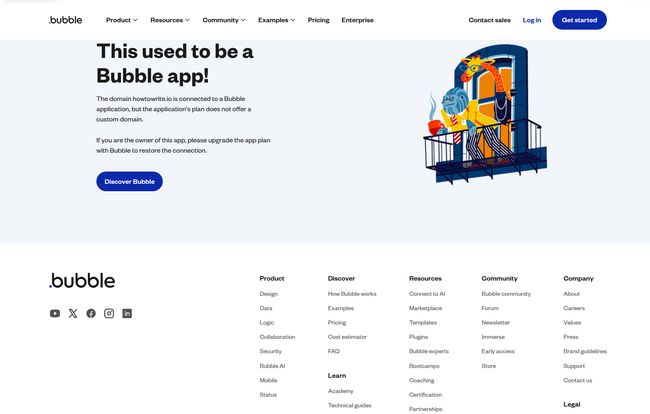
Visit HowToWrite.io
Oof. That’s… not a good sign. For those not in the know, this is a generic page from Bubble, a popular no-code platform that lets people build web applications without writing a line of code. This message essentially means the lights are on, but nobody's home. The domain is working, but the app itself has been disconnected, likely because the creator’s subscription plan lapsed.
So, my review took a sharp turn. This isn’t just a look at a tool anymore; it’s a bit of digital archeology. It’s a ghost story about a promising app that seems to have vanished into the ether. What was HowToWrite.io supposed to be? And what can its disappearance teach us?
What HowToWrite.io Promised to Be
Digging through the digital breadcrumbs and cached info, a picture of a pretty neat little service emerges. It wasn't trying to be the next Jasper or Copy.ai. It had a very specific, very human-centric mission.
The Core Offerings
The whole idea was to provide an AI writing assistant for things you wouldn't normally trust to a robot. Its list of generators was quite charming, actually. It included:
- Songs and lyrics
- Resignation letters
- Wedding speeches and vows
- Letters of recommendation
- Poems
- And more personalized content
The platform also promised free, instant revisions, which is a must-have for any writing tool. Getting the AI’s first draft is one thing, but being able to tweak and refine it until it sounds like you is where the real magic happens. Or, where it was supposed to happen, anyway.
The Irresistible Pricing Model: A Lifetime Deal
Now here’s where things get really interesting. HowToWrite.io had a pricing model that makes deal-hunters like me sit up and pay attention. They offered a free plan to get you started, which gave you 5 free documents. After that, you had one option:
A $25 one-time payment for an UNLIMITED Lifetime Membership.
Let that sink in. For less than the price of a couple of movie tickets, you were promised unlimited AI-powered writing for life. No monthly fees, no recurring subscriptions. It’s the white whale of SaaS pricing, the legendary Lifetime Deal (LTD). And frankly, it always makes me a little suspicious. While it's an incredible offer for the user, it’s a notoriously difficult business model to sustain. The developer gets a quick cash injection, but has to support that user—and their server costs—forever. It's a bold move, and sometimes, a fatal one.
The Theoretical Pros and Cons
If the app were still running, how would it stack up? Based on its proposed structure, we can piece together a pretty good idea of its strengths and weaknesses. I've always felt that the promise of a tool is just as important as its execution.
| The Potential Upsides | The Likely Downsides |
|---|---|
| Unlimited Everything: The lifetime deal meant no holding back. Write as many poems or speeches as your heart desired. | Limited Free Trial: Only 5 documents before you had to pay. Not a lot of runway to decide if you like it. |
| Niche Specialization: Focused on personal writing, which could mean better, more tailored output for those tasks. | Paywalled Features: The best stuff, like unlimited use and auto-saving, was locked behind the paywall. |
| Simplicity: A one-and-done payment is refreshingly simple in a world of complex subscription tiers. | Sustainability Questions: As we've seen, a $25 LTD raises serious questions about the long-term viability of the service. |
| Priority Support: Paying members were promised priority support and a say in new features. | Quality Unknown: Without being able to test it, we'll never know if the AI was actually good at writing a heartfelt wedding vow. |
A Cautionary Tale for the No-Code World
The demise of HowToWrite.io (if that's what this is) is a classic cautionary tale for the digital age, especially in the booming no-code scene. Platforms like Bubble have democratized app development, allowing creators to bring ideas to life without huge teams or venture capital. It's amazing. But it also means that projects can appear and disappear just as quickly.
A creator might lose passion, run out of funds to pay the platform subscription, or simply move on to the next idea. For users, especially those who invested in a "lifetime" deal, it's a frustrating dead end. It’s a reminder to do your due diligence. A lifetime deal from an established company is one thing; a LTD from a brand-new, solo-developer project on Bubble is another thing entirely. It's a gamble. Sometimes it pays off, and sometimes the site just... vanishes.
Frequently Asked Questions about HowToWrite.io
What was HowToWrite.io supposed to be?
HowToWrite.io was designed as a specialized AI writing assistant focused on helping users create personal content. This included things like wedding vows, poems, songs, letters of recommendation, and resignation letters.
Why is the HowToWrite.io website not working?
The website displays an error message from Bubble, a no-code development platform. This typically means the application's subscription plan with Bubble has expired or been canceled, effectively taking the service offline even though the domain name is still active.
What was the pricing for HowToWrite.io?
It offered a limited free trial of 5 documents. After that, the main offer was a $25 one-time payment for a lifetime membership, which promised unlimited AI writing, revisions, and other premium features.
What is a Lifetime Deal (LTD) and is it risky?
A Lifetime Deal, or LTD, is a one-time payment for lifetime access to a product or service. They can be great value but are also risky. New companies may offer them to generate initial revenue but can struggle to support users long-term, sometimes leading to the service shutting down.
Are there good alternatives to HowToWrite.io for personal writing?
Absolutely. While HowToWrite.io is gone, many larger AI platforms like ChatGPT, Jasper, and even Canva's Magic Write have features that can be prompted to handle personal writing tasks. The key is to provide very specific, personal details in your prompts to get a good result.
The Digital Ghost in the Machine
So, there you have it. The story of HowToWrite.io is a short one, a digital ghost story of a tool with a great premise and a risky business model that, it seems, couldn't go the distance. It’s a shame, because the idea of an AI that helps with the words we struggle with most—the ones for eulogies, for celebrations, for goodbyes—is a powerful one.
It serves as a potent reminder for all of us in the tech space, whether we're creators or consumers. An idea is just an idea until it has a sustainable foundation beneath it. And a "lifetime" on the internet can sometimes be brutally short. RIP, HowToWrite.io. You were an intriging concept.
Reference and Sources
- Bubble.io: The no-code platform used to build the HowToWrite.io application. https://bubble.io/
- Information regarding the tool's features and pricing was gathered from publicly available cached data and third-party tool directories.
